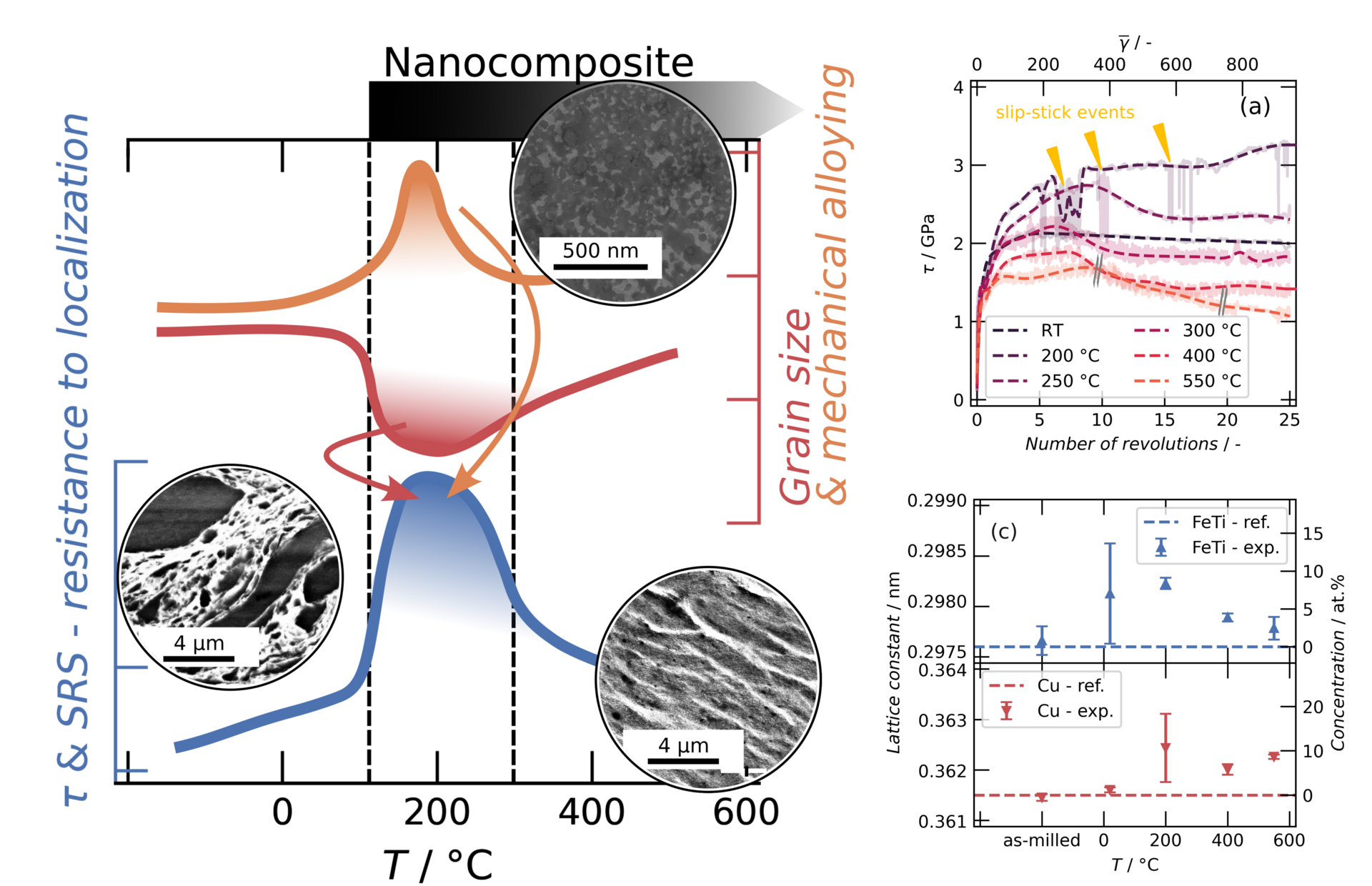This new study from the Chair of Materials Physics of the Montanuniversität Leoben and the Erich Schmid Institute (Austrian Academy of Sciences), with cooperation partners from DESY in Hamburg and the University of Vienna, unveals strategies for preparing nanocomposites from unlikely materials such as FeTi and Cu. Despite significant differences in the mechanical properties of the corresponding phases, it is shown that severe plastic deformation, e.g. high-pressure torsion, is a viable route to achieve homogeneous nanocomposites. By carefully analyzing the microstructure and the mechanical properties, it was possible to identify the underlying mechanisms that govern phase refinement by severe plastic deformation, accordingly adapt process parameters, to finally achieve the desired homogeneous nanocomposite. Overall, the study highlights that for unlikely material pairings, as often required in pursuing superior functional materials, the mechanical behavior of the phases involved and their interplay remains critical and must be thoroughly investigated when aiming for controlled structural homogeneity of bulk nanomaterials.
In particular, FeTi is among the most promising hydride formers, so understanding the mechanisms to steer and control its microstructure is essential and will pave the path for preparing novel materials for solid-state hydrogen storage.
L. Schweiger, D. Kiener, M. Burtscher, E. Schafler, G. Mori, F. Spieckermann, J. Eckert, From unlikely pairings to functional nanocomposites: FeTi–Cu as a model system, Mater. Today Adv. 20 (2023) 100433. https://doi.org/10.1016/j.mtadv.2023.100433.

